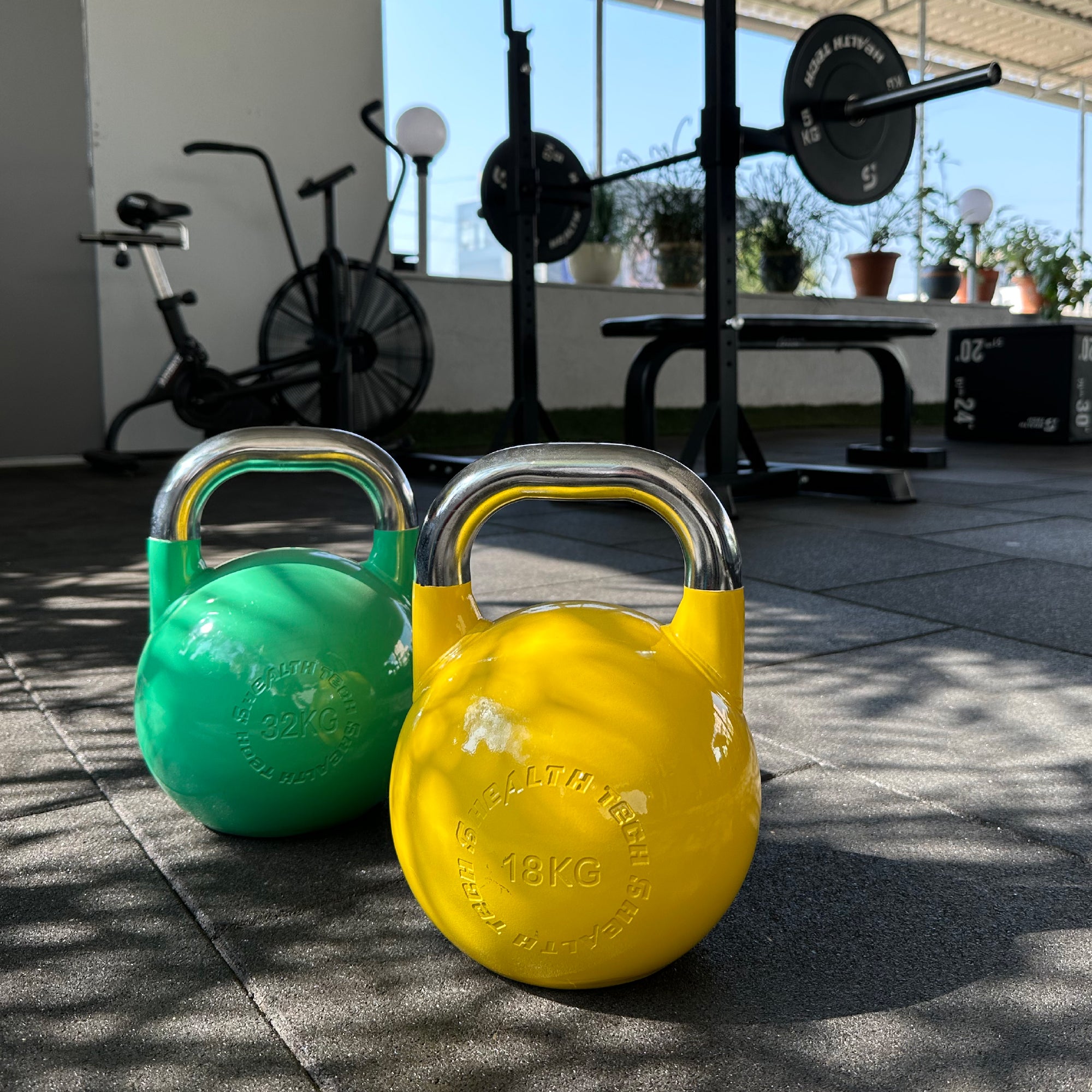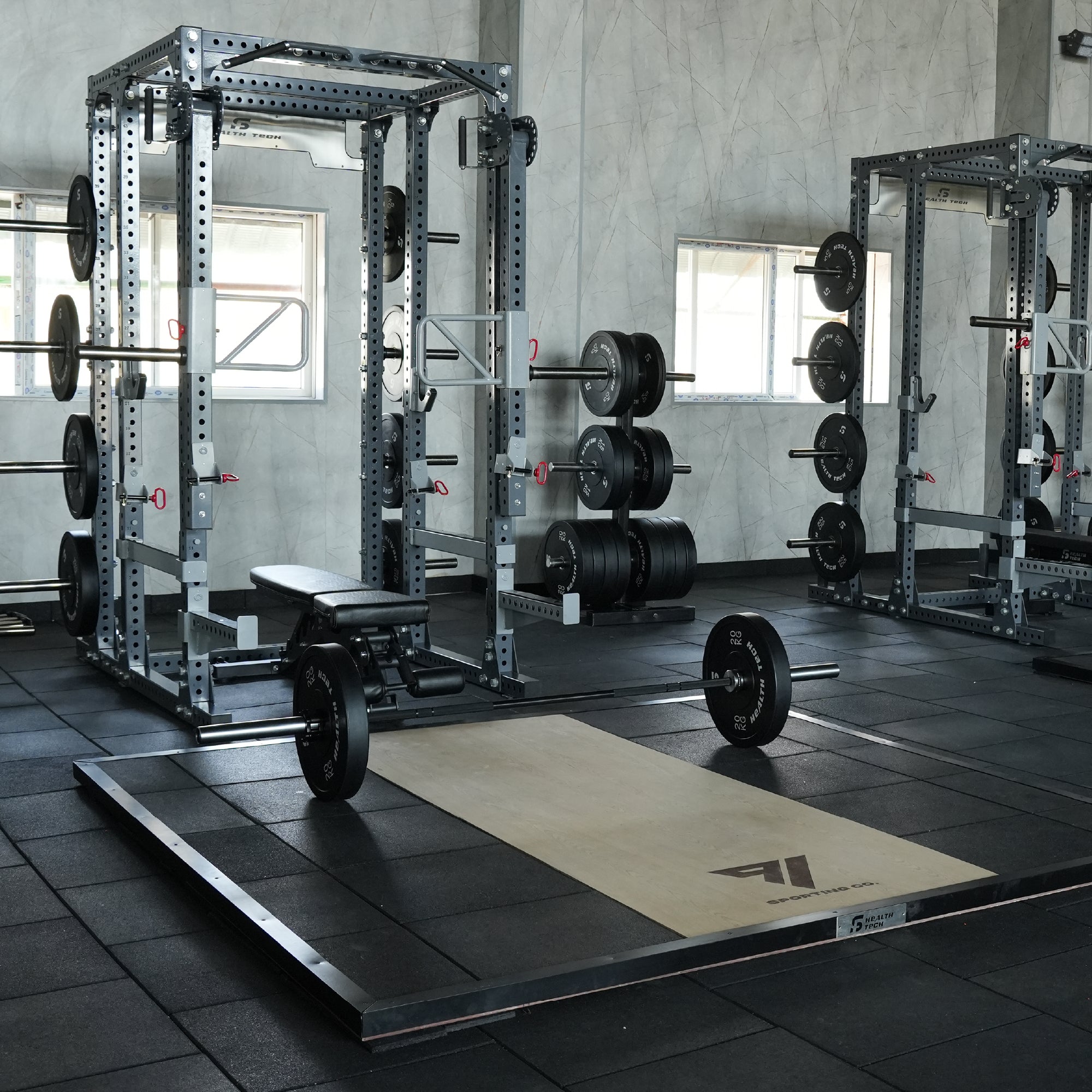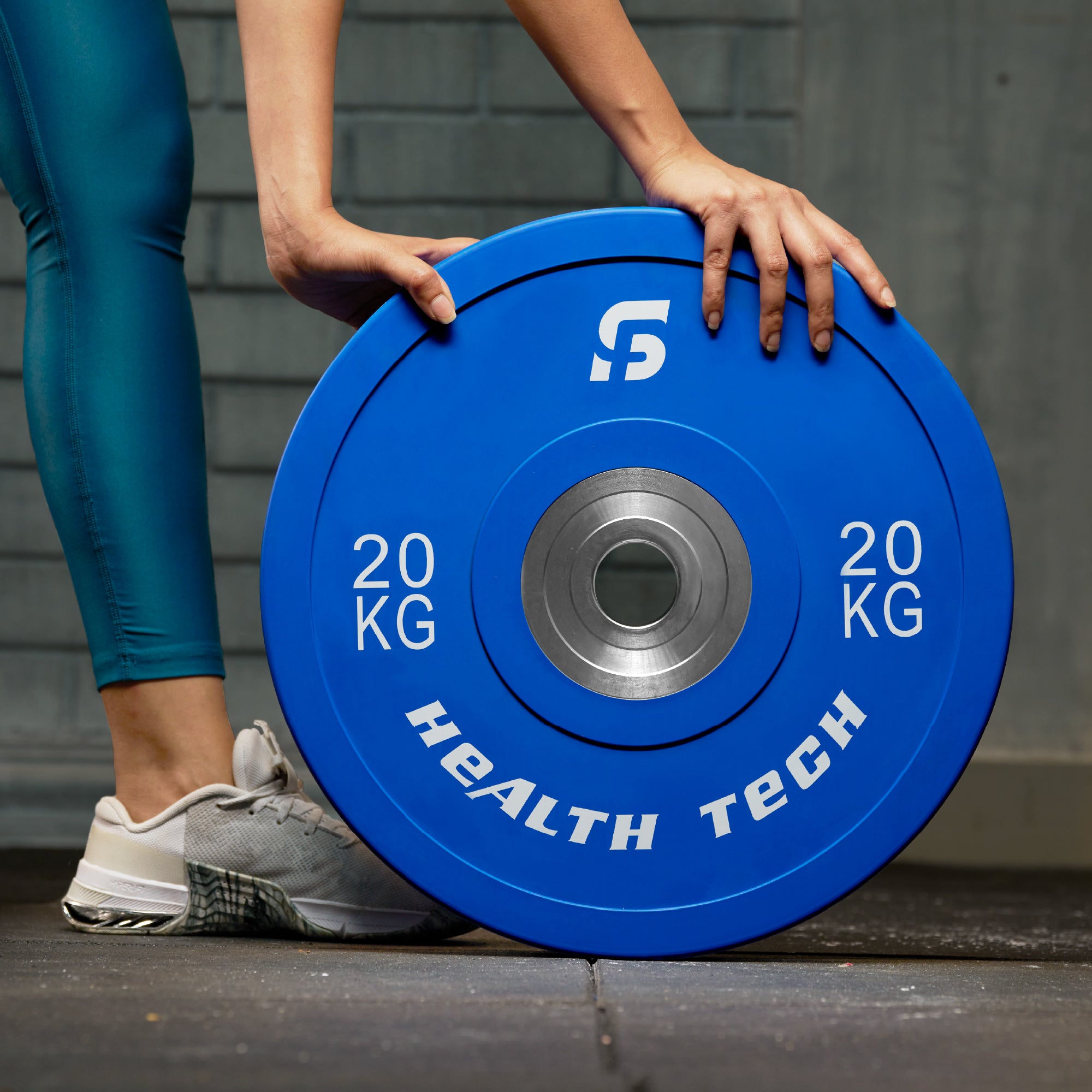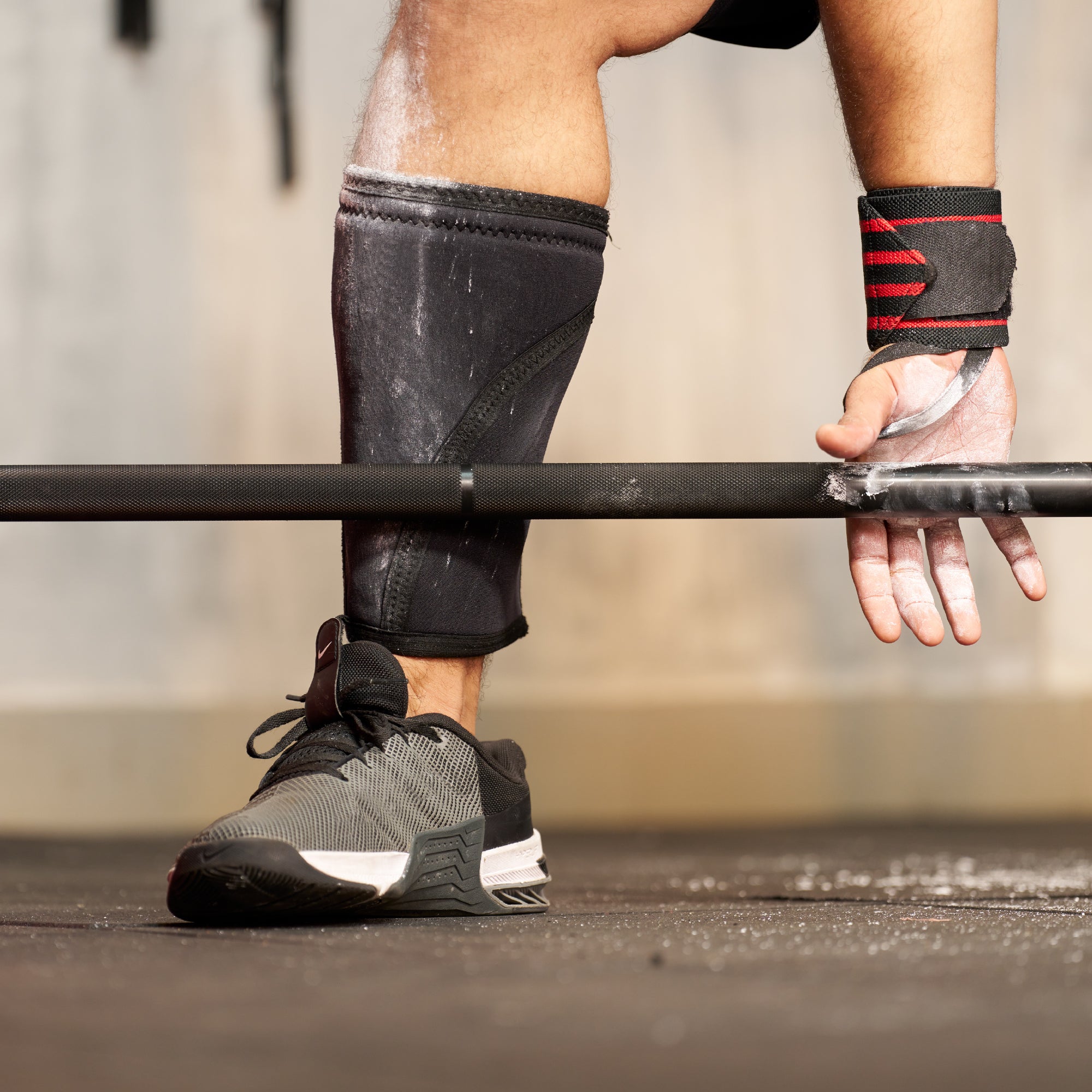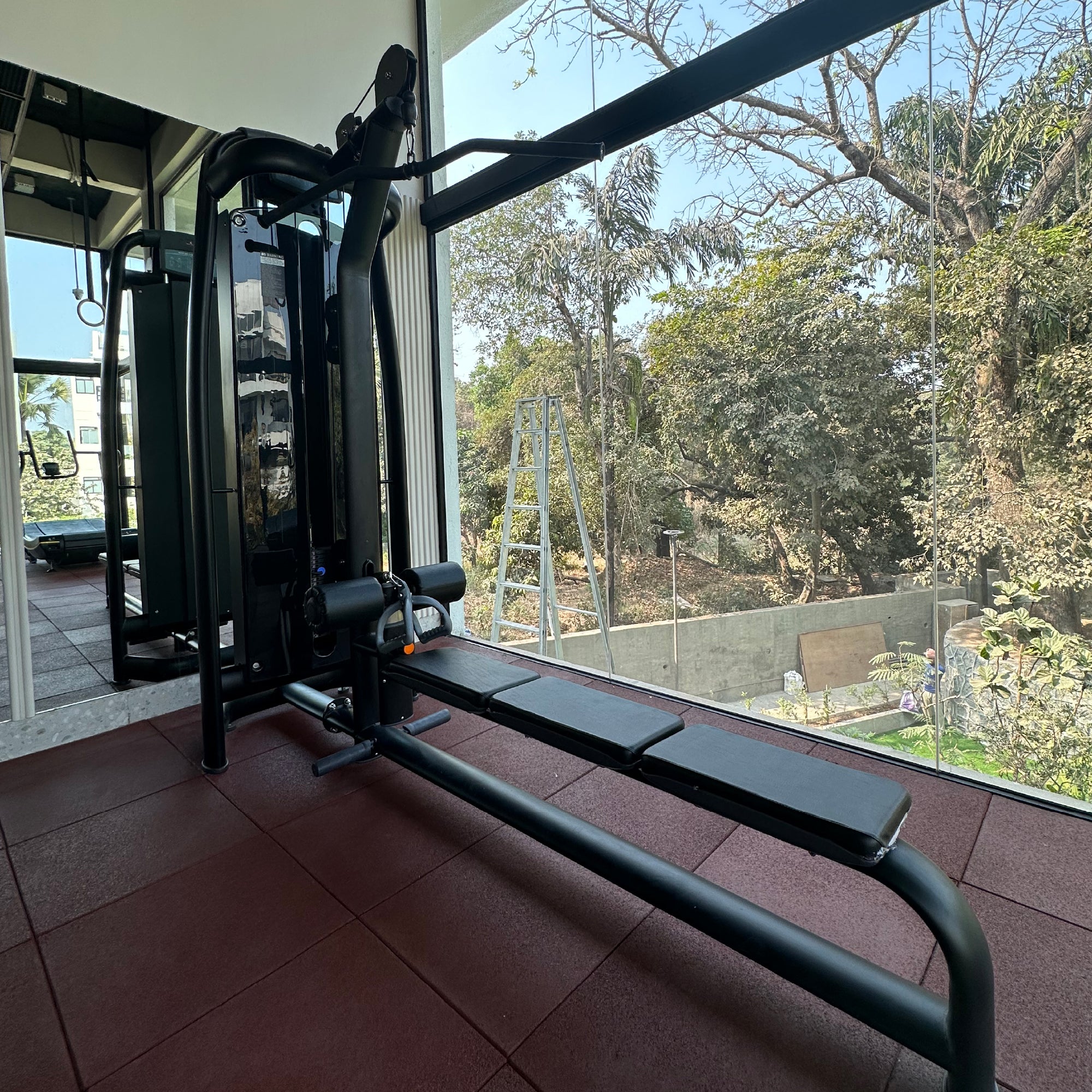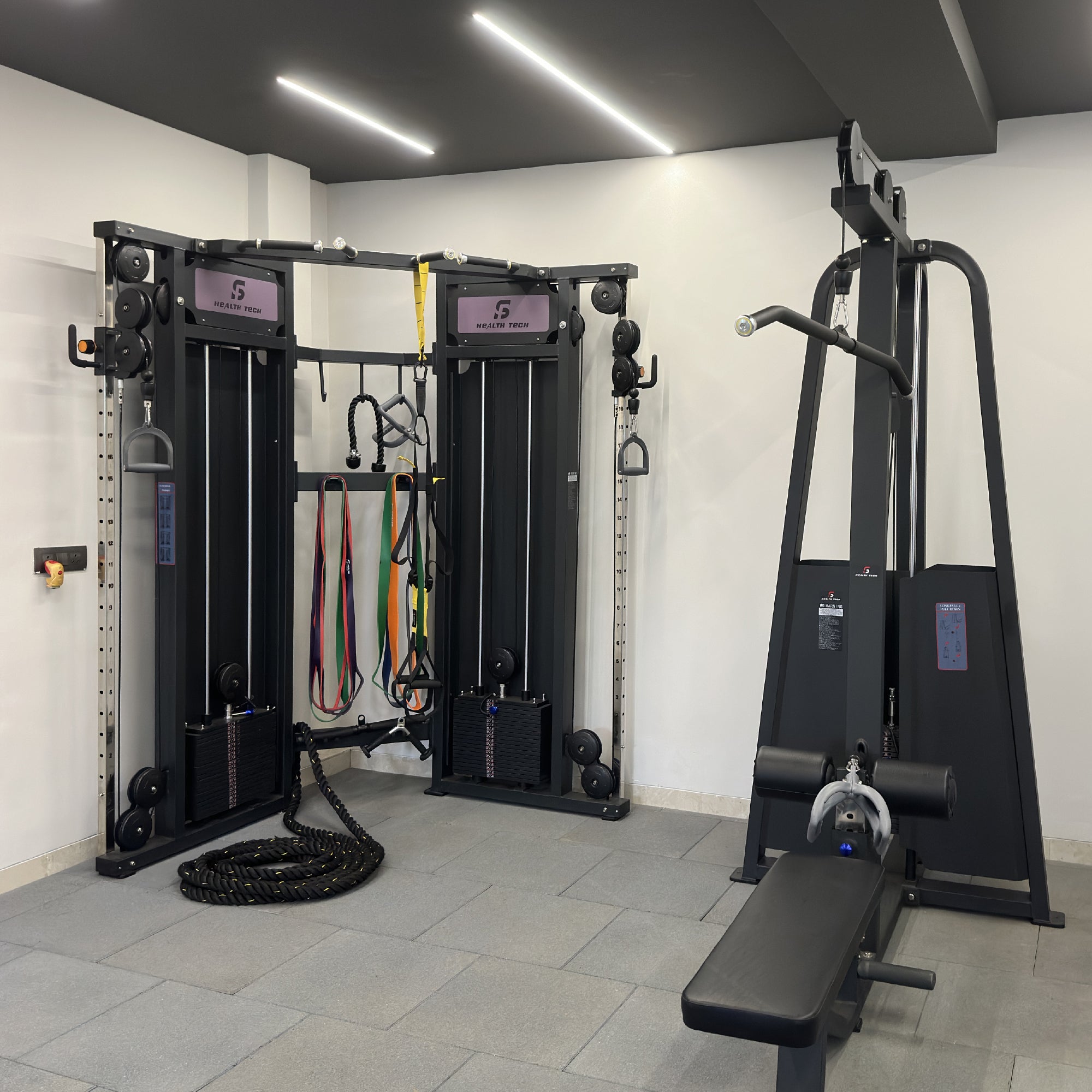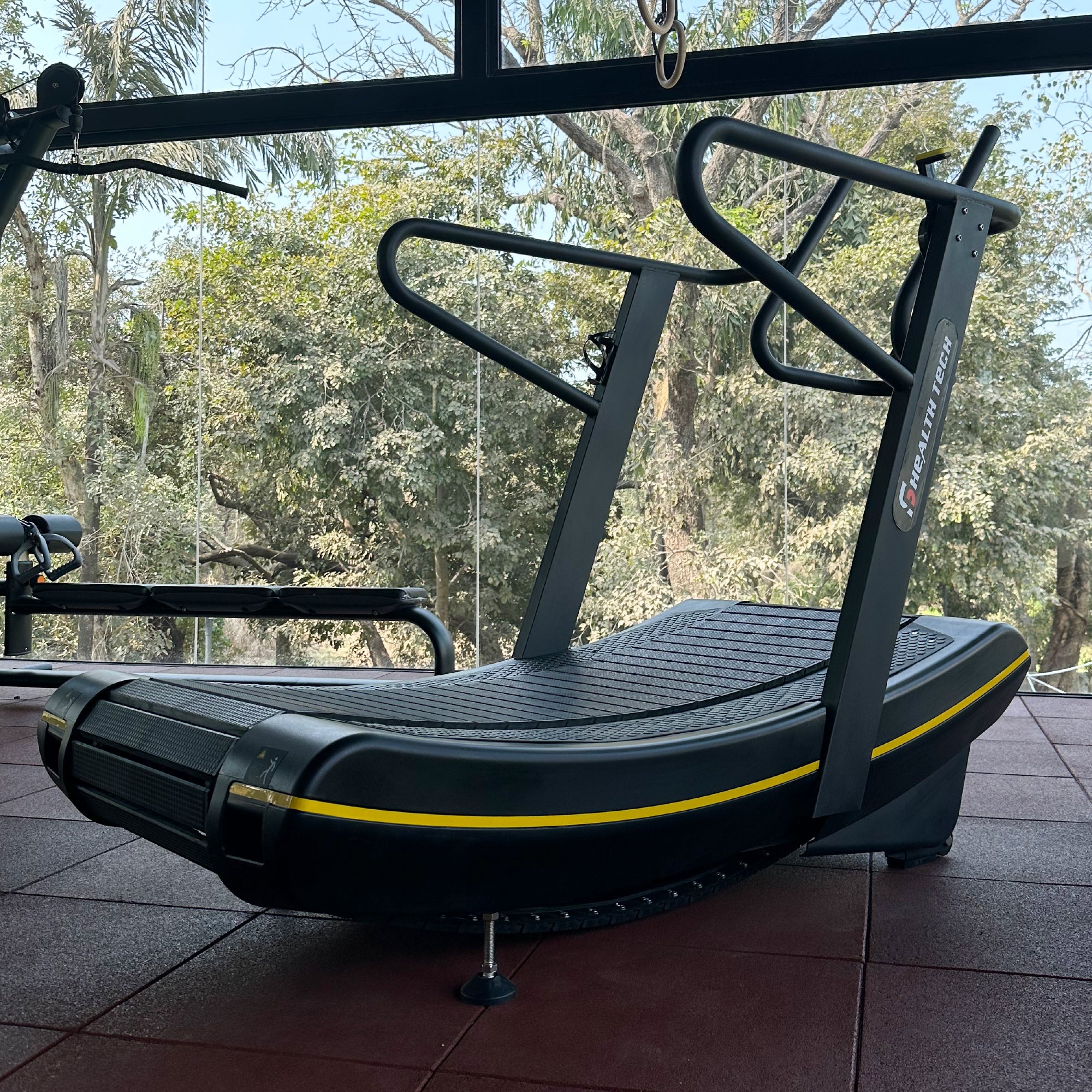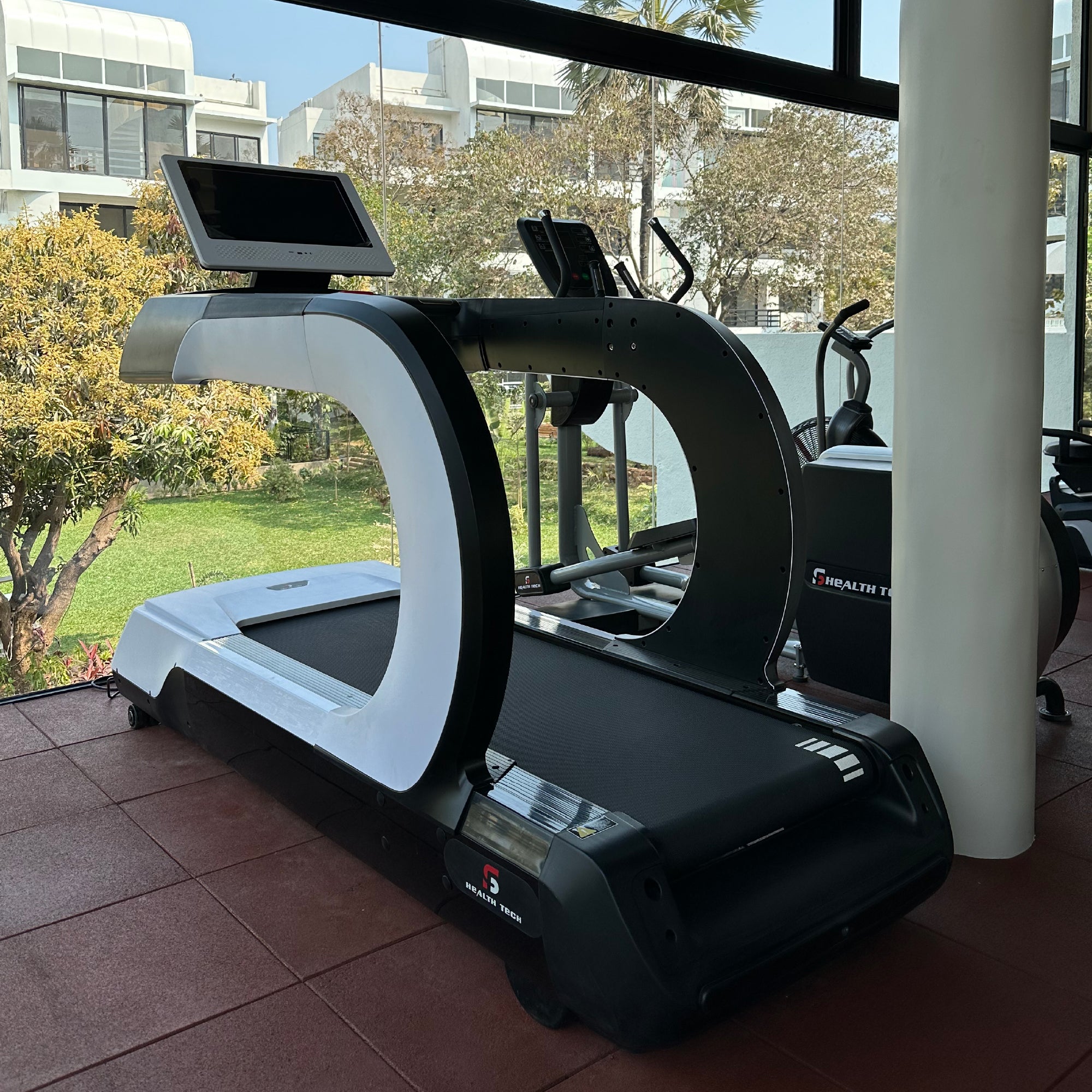10 Exercise Bike Benefits For Your Health
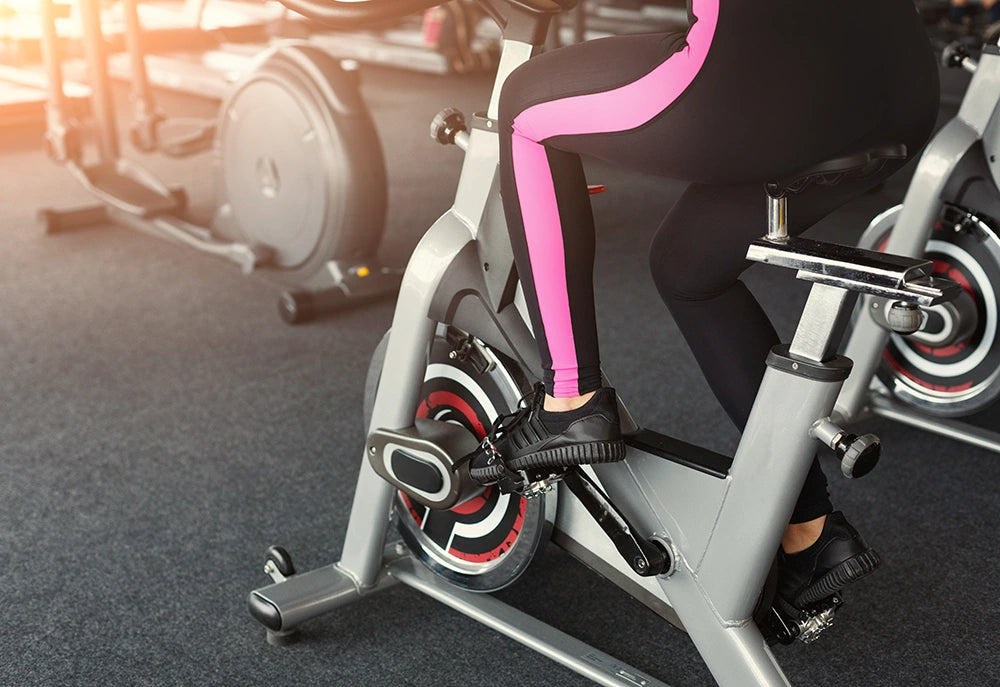
Exercise bikes offer a low-impact workout that can help you burn calories, improve heart health, and build muscle. Plus, you can enjoy the benefits regardless of the weather.
Anyone can easily use an exercise bike. Simply hop on and start pedalling! No classes or complicated moves are needed. You just have to wear some comfortable clothes and supportive shoes.
Regular exercise biking has many benefits, some of which might surprise you. Let's explore them in this blog.
What is an Exercise Bike?
An exercise bike is a stationary machine that mimics the feeling of riding a regular bicycle. There are several kinds of indoor bikes available today, including air bikes, spin bikes, folding bikes, and upright bikes.
Exercise bikes are primarily used to improve cardiovascular health. They can help lower blood pressure, reduce stress, strengthen the heart, and manage cholesterol levels. Many bikes let you adjust the resistance, making them suitable for people of different fitness levels.
Benefits of an Exercise Bike
-
Stronger Lower Body
Riding a stationary bike is great for strengthening your lower body muscles. It helps build up your hamstrings, quads, glutes, and calves. You can even make it more challenging by increasing the resistance, turning your workout into a strength-building session.
Exercise bikes can also help strengthen your core and arms, especially on models designed for that purpose. Airbikes are a good example.
So, not only will you get stronger legs from riding a stationary bike, but you might also see improvements in other parts of your body.
-
Better Heart Health
Exercise bikes offer numerous benefits for your heart. Studies have shown that cycling can significantly improve aerobic capacity and the body’s ability to use oxygen. Even short workouts, like 10 minutes a day, can help improve overall heart health and reduce the risk of heart disease. High-intensity interval training (HIIT) on an exercise bike can also enhance oxygen utilisation during exercise.
-
Burn Calories Fast
Many people use indoor cycling to lose weight. A 2010 Brazilian study showed that regular biking for 12 weeks can help people lose weight. Participants biked for 45 minutes, three times a week, and also followed a special diet.
Other research also has similar results. In a 2018 study, sedentary women aged 32 to 47 biked three times a week for six weeks. Some women who were overweight lost enough weight to reach a normal weight range.
These studies both show that regular biking can help with weight loss, but it's important to combine it with a healthy diet.
-
Better Lung Capacity
Most people know about the benefits of using a stationary bike. However, the positive impact on lung health is often overlooked by fitness experts and bloggers.
While indoor cycling isn't as intense as swimming or diving, it still helps strengthen your lungs. Regular bike workouts enhance overall muscle function and your body's ability to use oxygen. As you push yourself during exercise, your body adapts and improves its breathing capacity.
-
Less Pressure on Your Joints
Exercise bikes are gentle on your joints.
Indoor cycling is a low-impact workout compared to activities like squatting. This means it's easier on your knees and ankles. It's often better for your joints than running.
Recumbent bikes are especially joint-friendly. They're a great option for older adults who want to improve heart health without straining their bodies.
However, it's important to listen to your body. Intense workouts or using bikes incorrectly can still put stress on your joints. For example, standing on a spin bike can be hard on your knees.
-
Better Posture
In addition to strengthening leg muscles and improving overall health, cycling can also help improve your posture. While most exercise bikes don’t force an upright position, they encourage better body alignment.
To prevent injuries, it’s important to maintain a straight back while cycling. This helps strengthen the lower back and can be especially beneficial for people with sedentary jobs. Developing good posture habits on the exercise bike can translate to better posture in everyday life.
-
Helps to Make Your Workout Enjoyable
Exercise bikes often get a reputation for being boring, but newer models are changing that. Many bikes now offer internet connectivity and the ability to use mobile devices. This means you can watch your favourite shows while you exercise, making workouts more enjoyable. Some people find indoor bikes more entertaining than other types of exercise equipment.
-
Safer Than Road Biking
Road biking can be dangerous. With cars, traffic, and unpredictable conditions, staying safe requires constant attention. An exercise bike offers a safe and controlled environment where you can focus on your workout without worrying about external hazards.
-
Customise Your Workout
As mentioned earlier, one of the great things about exercise bikes is the ability to adjust the workout to your fitness level. With just a touch of a button, you can increase or decrease the resistance. Whether you want a leisurely ride or a challenging workout, you have complete control.
-
Reduced Stress
Riding an exercise bike is a great way to unwind and relax. This type of cardio workout helps your body release endorphins, which are mood-boosting chemicals. Exercise bike workouts can also improve your sleep, which contributes to lower stress levels overall.

Exercise Bike Workouts
There are many ways to structure your exercise bike workouts. From simple to complex, you can find routines to fit any fitness level.
Whether you prefer a low-impact workout on a recumbent bike or a more intense ride to boost your mood, there's an exercise bike workout for you.
Easy Exercise Bike Workouts
Don't let the word "easy" fool you. Gentle workouts still deliver significant benefits. All forms of structured cardio are helpful, but having different intensity levels lets you choose what's best for you on any given day. For example, a relaxed, steady pace is perfect for recovery after a tough leg workout.
You don't need to be a cycling expert. Keep it simple and focus on a pace or resistance that helps you recover rather than pushing yourself to the limit. Find a comfortable seat, put on your favourite music, and enjoy a relaxing spin session.
Moderate Exercise Bike Workout
Moderate exercise bike workouts offer a wide range of intensity levels. You might enjoy them in a cycling class or on your own.
Interval training can be a great way to maximise the challenge and benefits of a moderate workout. You don't need to go all-out for every interval; short bursts of effort followed by recovery can be very effective. Give it a try and see how it fits into your routine.
Hard Exercise Bike Workout
Every workout routine needs a challenge—something to push you to your limits. A tough exercise bike workout is a great way to break up the monotony and keep you motivated. Combining bike intervals with other exercises into a circuit is a powerful approach.
No personal trainer is needed. Just you, your bike, and another form of exercise.
A challenging bike workout doesn't have to be just about sprints. Try mixing in different full-body exercises and finishing with bike intervals. This combination of strength training and cycling will keep your heart rate up and your workout interesting.
What’s the Difference Between Exercise Bike and Outdoor Cycling?
Indoor and outdoor cycling offer different workout experiences. Beyond the obvious location difference, there are several factors to consider.
Your choice of workout often depends on your living situation and the cycling conditions in your area. Urban environments with limited space or poor cycling infrastructure might make indoor cycling more appealing. Conversely, those with easy access to safe bike paths might prefer outdoor rides.
Outdoor cycling typically involves breaks during downhill sections or red lights, while indoor bikes require continuous pedalling. However, outdoor cycling also presents challenges, especially when climbing uphill. This can strain your lower body and potentially lead to knee or quad injuries.
Interestingly, indoor cycling can feel more demanding despite not necessarily being a tougher workout. Factors like increased sweat, limited air circulation, and restricted body movement contribute to this perception.
Frequently Asked Questions (FAQs)
-
How do exercise bikes work?
Exercise bikes create resistance to pedal rotation, allowing you to control the intensity of your workout. This resistance is typically generated through friction, magnets, or air resistance.
-
How often should I use an exercise bike to see results?
Aim for 3-5 workouts per week, each lasting 20-30 minutes, to improve your fitness and overall health.
-
Can exercise bikes help with weight loss?
Yes, exercise bikes can contribute to weight loss when combined with a balanced diet and regular physical activity.
-
Are exercise bikes suitable for seniors?
Absolutely. Exercise bikes offer a low-impact workout, perfect for seniors wanting to stay active without straining their joints.
-
How can I stay motivated while using an exercise bike?
Try different types of workouts, listen to music or podcasts, watch entertaining videos, or set goals to keep your exercise sessions engaging.
-
Are exercise bikes safe for people with knee pain?
Often, yes. Exercise bikes provide a low-impact workout that can be beneficial for individuals with knee pain. However, it's advisable to consult with a healthcare professional.
-
What are the different types of exercise bikes, and how do I choose?
There are three main types of exercise bikes: upright, recumbent, and spin bikes. Consider factors like comfort, desired workout intensity, and available space when choosing.
-
Can exercise bikes help burn belly fat?
Yes, stationary bike riding can help reduce overall body fat, including belly fat. However, spot reduction (targeting fat loss in a specific area) is challenging. Consistent exercise combined with a balanced diet is important to achieve belly fat reduction.
-
What muscles does riding an exercise bike work?
Exercise bikes primarily target the lower body, including the glutes, quads, and calves. Some models also engage the core and upper body muscles.
-
Is 30 minutes a day on an exercise bike enough?
Yes, 30 minutes of daily exercise bike use is a great start. It can improve cardiovascular health, and mood, and burn calories. However, for more significant fitness gains or weight loss, increasing duration or intensity might be necessary.
-
Can you get in shape just on a stationary bike?
While it's possible to improve overall fitness with consistent stationary bike use, a well-rounded routine is ideal. Incorporating strength training and other forms of exercise will help you achieve a balanced physique and prevent plateaus.
-
How long should you use an exercise bike a day to lose weight?
Weight loss depends on various factors, including diet and overall activity level. While increasing exercise bike usage can contribute to weight loss, aiming for at least 30 minutes of moderate-intensity exercise most days of the week is a good starting point.


